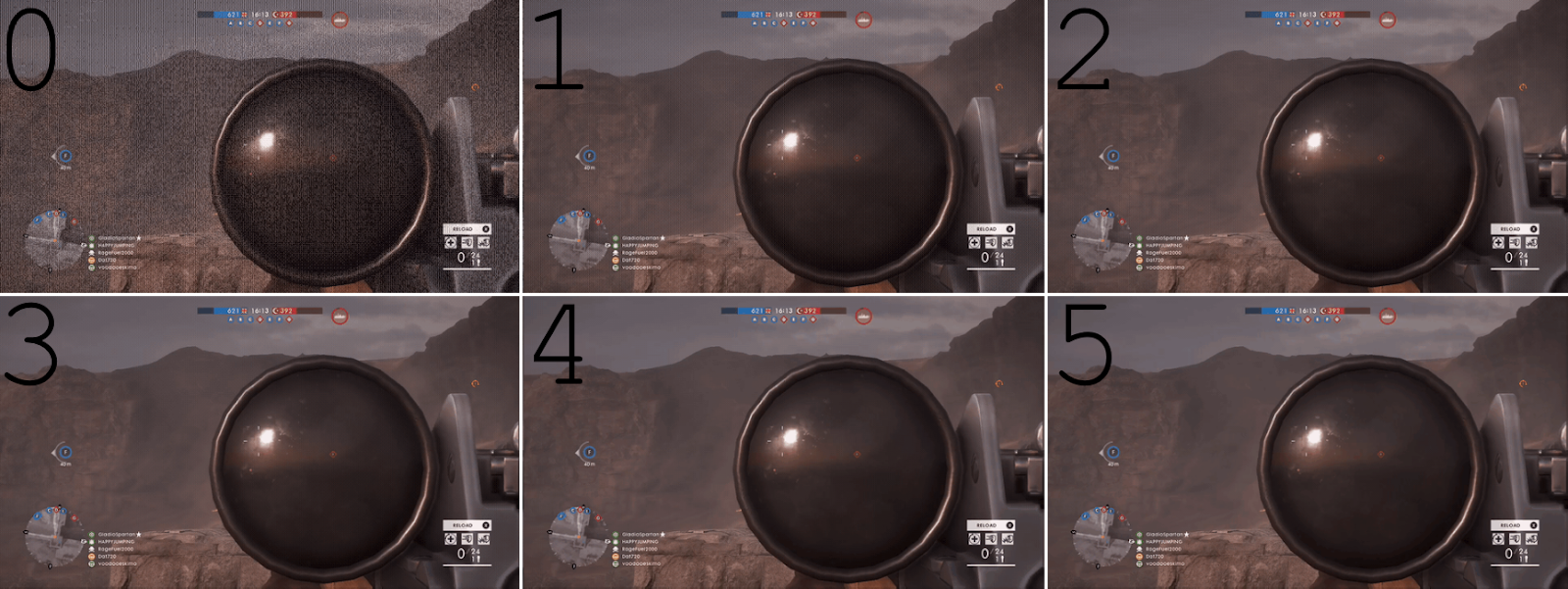I like to capture my Xbox One gaming moments to share with friends and have been working on a shell script to quickly convert videos to animated GIFs, I've put together this fairly simple little shell script that takes an input video and uses ffmpeg to convert to an animated GIF.
The GIF file format has a colour limitation of 256 colours, so optimisation needs to be done to ensure a good quality output. The script utilises ffmpegs palettegen options to generate a palette of colours to use in the second pass using the bayer dither option. This is what the palette PNG file looks like (upscaled from 16x16):
The resulting animated GIF turns out quite nice, this was captured from my Xbox One in the Battlefield 1 beta, the file is 480x260 and 4.3MB at 15 frames per second:
$ wget https://gist.githubusercontent.com/mplinuxgeek/dcbc3a4d0f51f2b445608e3da832ebb5/raw/vid2gif.sh
$ chmod +x vid2gif.sh
$ ./vid2gif.sh video.mp4$ ./vid2gif.sh -w 320 -f 10 video.mp4UPDATE: I've recently done some testing with different bayer dithering levels, results are below, I've also added a dithering argument to the script.
To specify a different dithering level use the -d argument:
$ ./vid2gif.sh -w 320 -f 10 -d 5 video.mp4| Dither | Size | Notes |
|---|---|---|
| 0 | 3.91MB | Largest file, worst image quality, |
| 1 | 3.33MB | Noticeable vertical lines |
| 2 | 3.19MB | Vertical lines still visible but better than 1 |
| 3 | 3.05MB | Vertical lines gone, very good image quality |
| 4 | 2.90MB | Hard to pick a difference from 3 |
| 5 | 2.82MB | Hard to notice a difference from 4 but some colour banding evident |

Bonus: if you want to be able to run the script from anywhere without specifying the full path or ./ simply copy it to /usr/local/bin:
$ sudo cp vid2gif.sh /usr/local/bin/$ vid2gif.shhttp://blog.pkh.me/p/21-high-quality-gif-with-ffmpeg.html
Just a warning, keep the input videos short, GIFs can get very large very quickly.





No comments:
Post a Comment